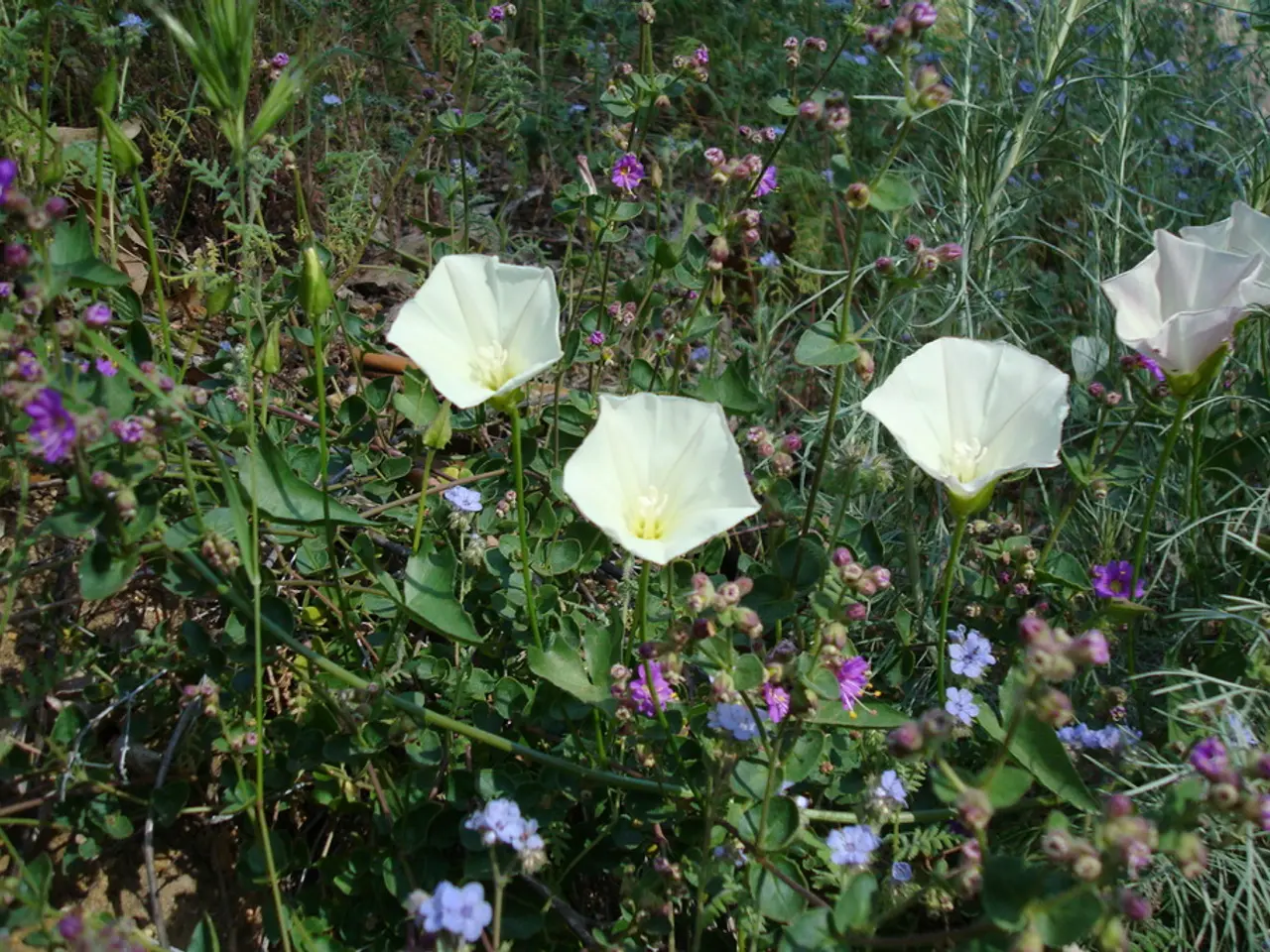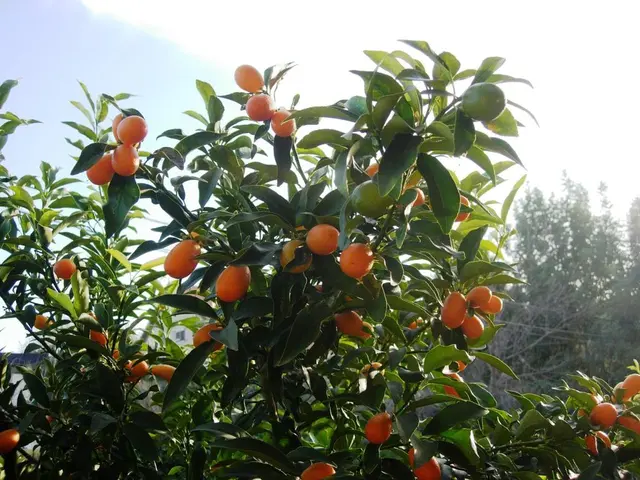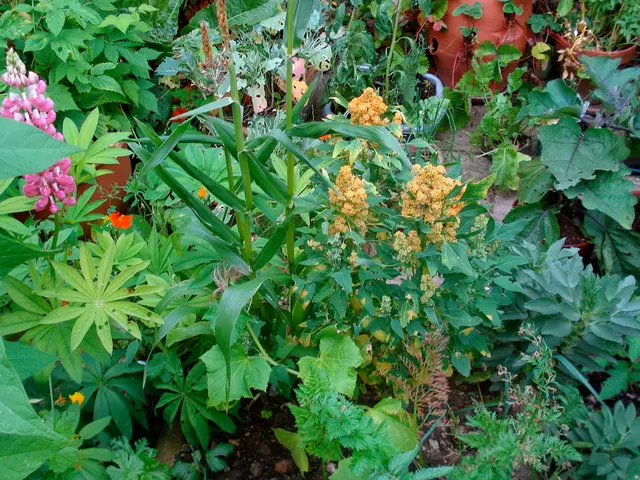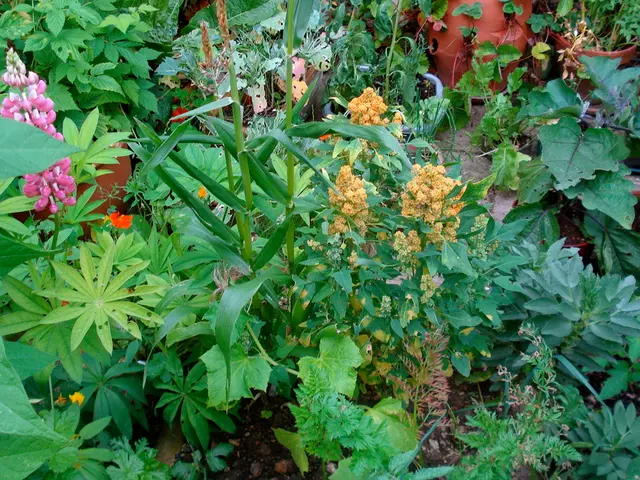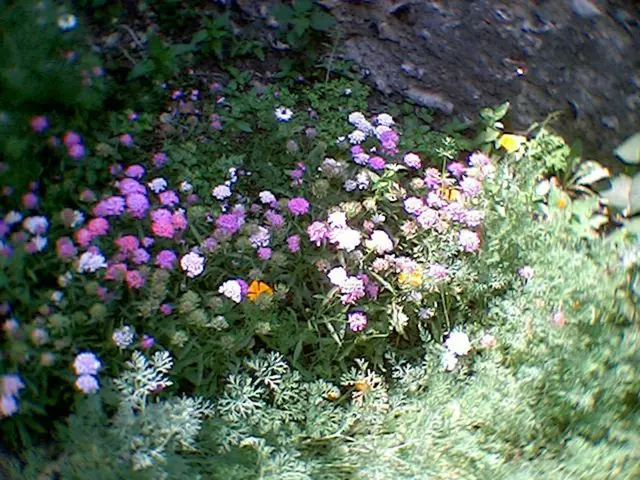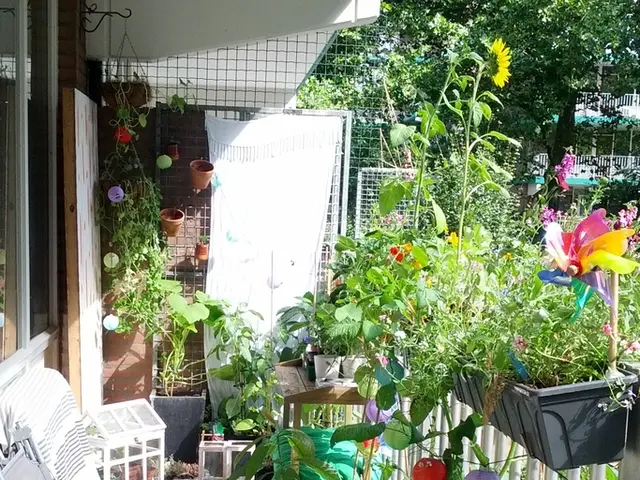Troublesome, aggressive plant species have been a constant challenge in my gardeners' career, and here are 5 species I've vowed never to cultivate again within my flower beds or borders.
In the world of gardening, a balanced and thriving garden ecosystem is key. However, some plants can pose a threat to this harmony due to their invasive nature. Here, we explore five problematic plants that gardeners should avoid and suggest suitable alternatives.
First on the list is Horsetail (Equisetum hyemale), a plant known for its deep-spreading roots that can make it difficult to control. Its architectural look may be appealing, but its invasive tendencies can quickly take over gardens and even encroach on neighbouring yards. If you wish to grow horsetail, it is recommended to plant it in confined containers or restricted areas to prevent its spreading. Alternatively, opt for non-invasive structural plants that are not aggressive runners.
Another plant to watch out for is Liriope spicata, commonly known as invasive Lilyturf or Monkey grass. This species spreads rapidly via runners and rhizomes, dominating garden space and crowding out other plants. To maintain a diverse and healthy garden, consider using non-invasive ground covers or clumping perennials like Black-Eyed Susan or Purple Coneflower, which also support pollinators and naturally suppress invasives.
Liriope muscari is another Liriope species that, while clump-forming, can become difficult to control and spread extensively. A better choice would be dense perennial flowers such as Purple Coneflower or Black-Eyed Susan, which form natural barriers without aggressive spreading.
Mint (Mentha spp.) is another invasive plant that gardeners should be wary of. Its rhizomes spread rapidly underground, similar to horsetail. For herbs, basil, thyme, or rosemary are controlled growers suitable for both flower beds and vegetable gardens.
Lastly, certain species of bamboo are notorious for their aggressive spreading rhizomes, making them very difficult to contain. Opt for clumping ornamental grasses or shrubs that do not spread invasively.
By selecting alternatives that do not spread aggressively and can coexist well with other plants, gardeners can maintain attractive, manageable flower beds and vegetable gardens free from invasive plant problems.
In addition to avoiding invasive plants, planting vigorous native or perennial flowers like Black-Eyed Susan and Purple Coneflower can help naturally suppress invasive species by outcompeting them and supporting beneficial insects, creating a healthier garden ecosystem.
| Invasive Plant | Reason to Avoid | Suggested Alternative | |---------------------|---------------------------------------|-----------------------------------------------| | Horsetail | Deep spreading roots, hard to contain | Container planting or non-invasive structural plants | | Liriope spicata | Rapid spreading runners | Black-Eyed Susan, Purple Coneflower | | Liriope muscari | Difficult to control clumps | Dense clumping perennials | | Mint | Aggressive underground runners | Basil, thyme, rosemary | | Bamboo (invasive types) | Spreading rhizomes | Clumping ornamental grasses or non-invasive shrubs |
Gardeners can also protect their hands during digging, planting, or pruning by using cowhide leather gardening gloves. To grow bamboo, it is recommended to plant it in large containers or create barriers to prevent spreading. Cherry laurel, a fast-growing shrub, can become invasive if not managed regularly, and Japanese anemones self-seed, producing new plants and expanding their presence.
In conclusion, by making informed choices about the plants we grow and taking proactive steps to manage invasive species, we can cultivate gardens that are both beautiful and sustainable.
- Instead of growing Liriope spicata due to its rapid spreading runners, gardeners can opt for Black-Eyed Susan or Purple Coneflower, which are non-invasive ground covers that support pollinators and naturally suppress invasives.
- Dense perennial flowers like Purple Coneflower or Black-Eyed Susan are a better choice than Liriope muscari, as they form natural barriers without aggressive spreading and are suitable alternatives in home-and-garden lifestyles, making for an attractive and manageable garden ecosystem.
